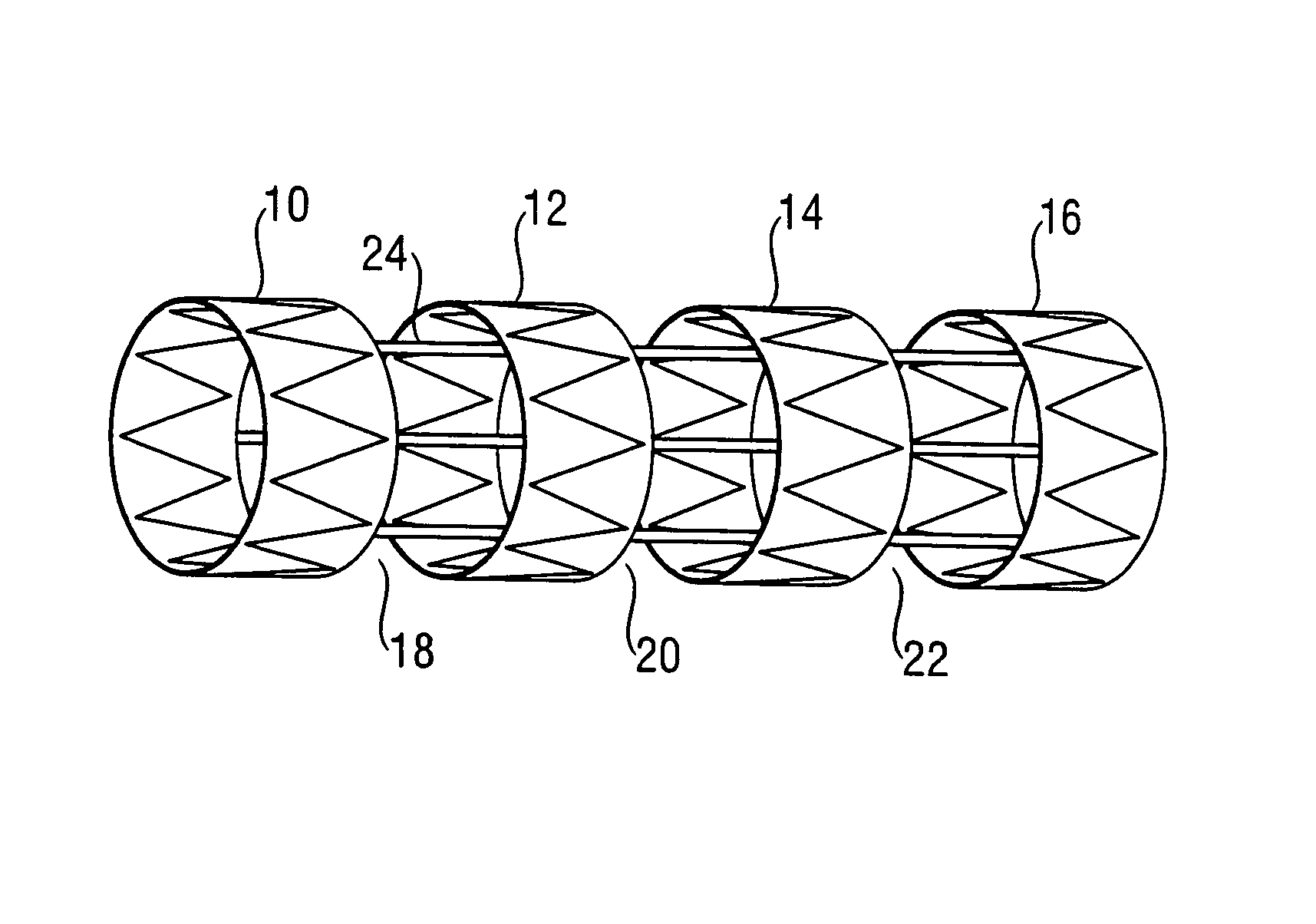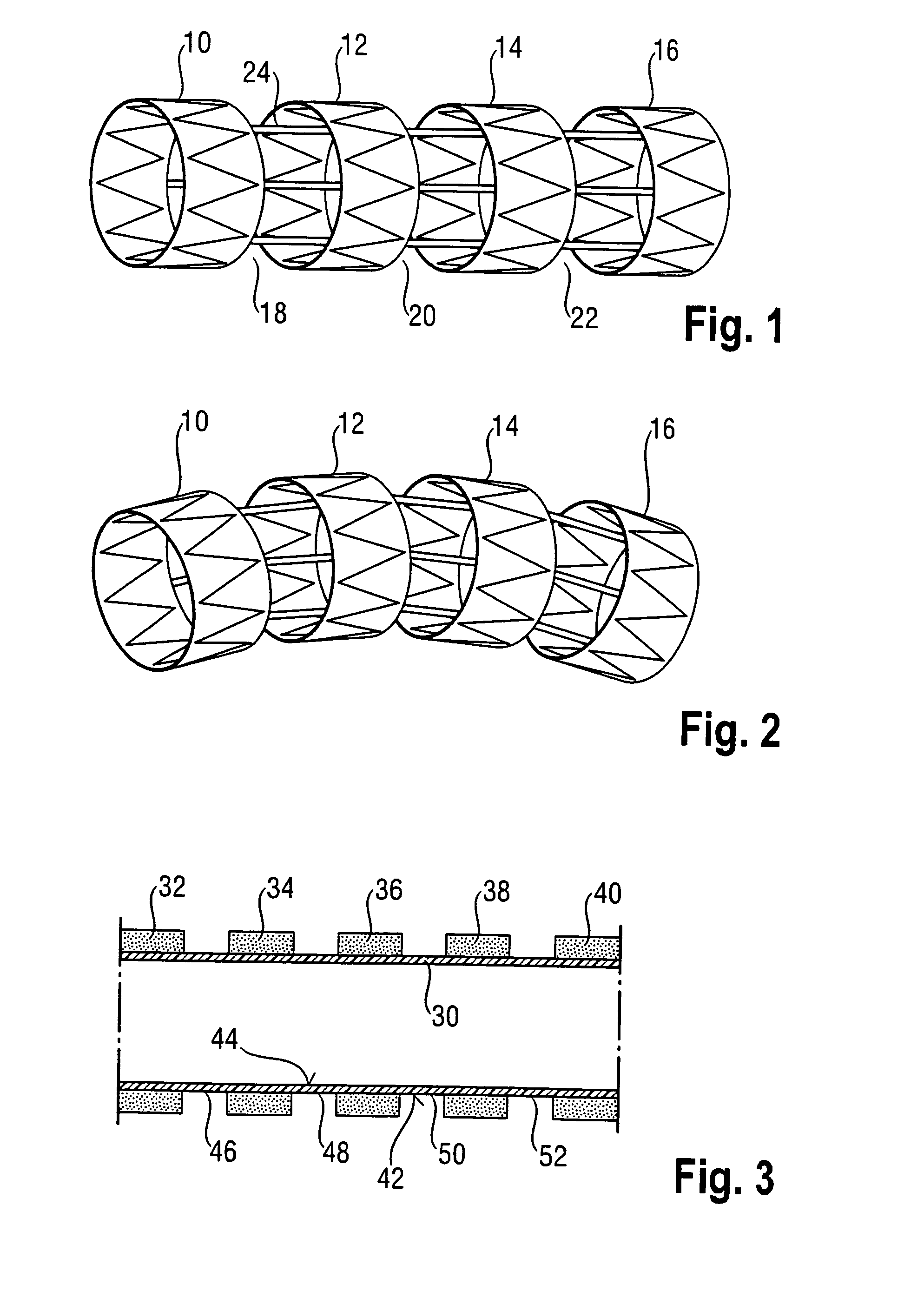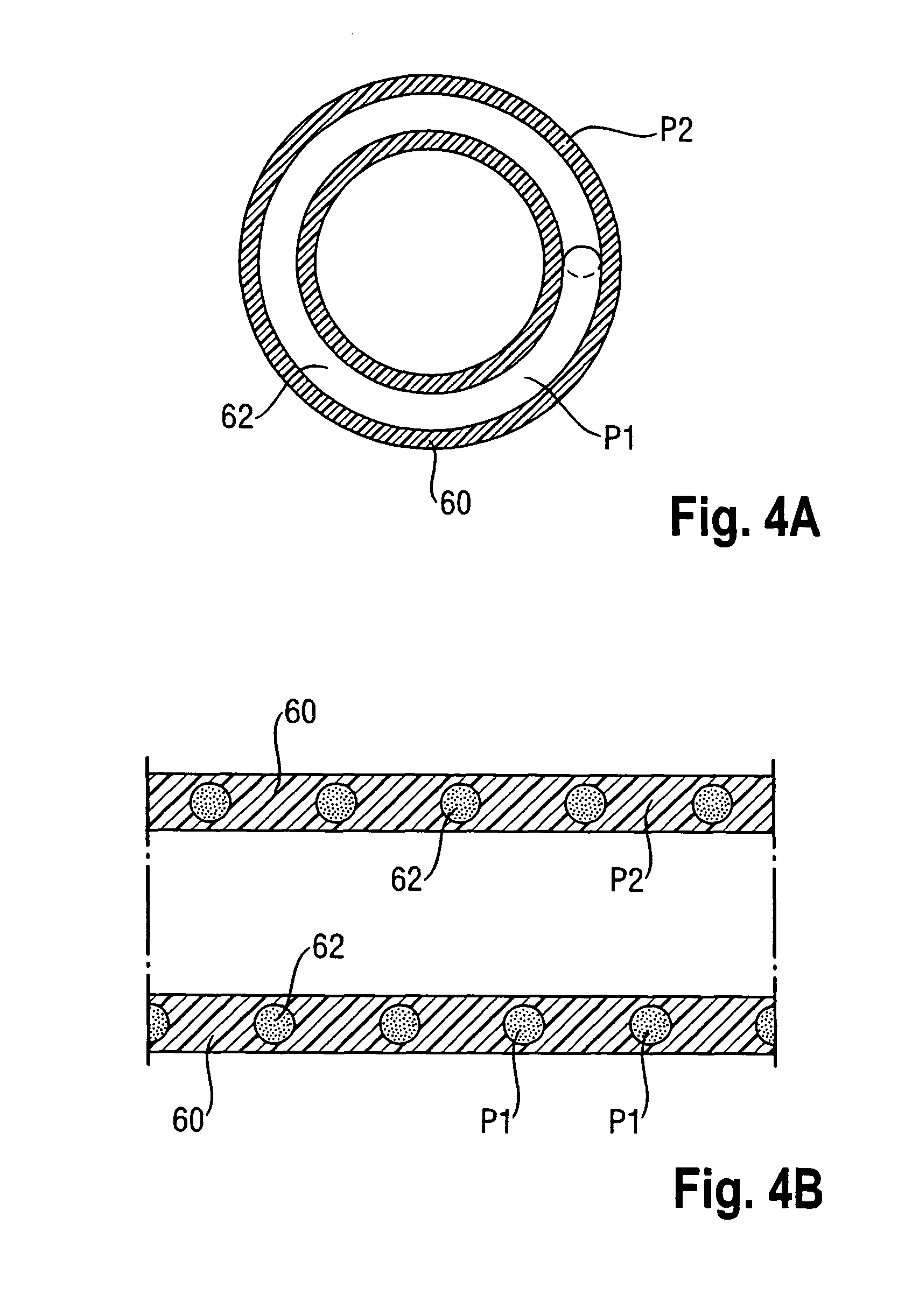Polymer prosthesis
a polymer and prosthesis technology, applied in the field of polymer prosthesis, can solve the problems of not being able to recognize various inventive aspects, requiring special production techniques, etc., and achieve the effect of simple and fast, well controllabl
- Summary
- Abstract
- Description
- Claims
- Application Information
AI Technical Summary
Benefits of technology
Problems solved by technology
Method used
Image
Examples
third embodiment
[0062]FIG. 4A-8B show schematically cross-sections of embodiments of a polymer prosthesis in accordance with the present invention. More in particular, FIG. 4A and FIG. 4B each show cross-sections of a third embodiment, wherein the polymer P1 of the relatively stiff stenting segments 62, is encapsulated between two layers of polymer P2 of the relatively flexible linking segments 60, which are in a form of two concentric layers of ePTFE.
fourth embodiment
[0063]FIGS. 5A and 5B each show cross-sections of a fourth embodiment, wherein the polymer P1 of the relatively stiff stenting segments 62 is positioned radially outwardly from the cylindrical component 60, acting here as the plurality of relatively flexible linking segment as portions of the continuous cylindrical component 60, which is preferably of ePTFE.
fifth embodiment
[0064]FIG. 6A and FIG. 6B each show cross-sections of a fifth embodiment similar to the embodiment shown in FIGS. 5A and 5B. However, in FIGS. 6A and 6B the polymer P1 of the relatively stiff stenting segments is positioned at least partly within interstices formed in the polymer P2 of the plurality of relatively flexible linking segments, here again shown in the form of a continuous cylindrical component 60, preferably made of ePTFE.
PUM
 Login to View More
Login to View More Abstract
Description
Claims
Application Information
 Login to View More
Login to View More - R&D
- Intellectual Property
- Life Sciences
- Materials
- Tech Scout
- Unparalleled Data Quality
- Higher Quality Content
- 60% Fewer Hallucinations
Browse by: Latest US Patents, China's latest patents, Technical Efficacy Thesaurus, Application Domain, Technology Topic, Popular Technical Reports.
© 2025 PatSnap. All rights reserved.Legal|Privacy policy|Modern Slavery Act Transparency Statement|Sitemap|About US| Contact US: help@patsnap.com



